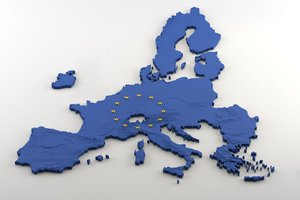News
Cross-border regions in the Commission’s proposed reform of the Schengen Area: a major step forward
January 2022
On 14 December 2021, the European Commission presented to the European Parliament its proposals for new rules to strengthen the governance of the Schengen Area. The draft regulation, which sets forth a "Union Code on the rules governing the movement of persons across borders", specifically takes account of "cross-border regions".
The Covid-19 pandemic and the closure of many borders in Europe compromised the principle of free movement in Europe, and the inhabitants of cross-border territories were the first victims of this. Now, with this proposed reform, the Commission is putting cross-border issues back at the heart of the European project. It is a major step forward which the MOT is very pleased about.
The proposed reform aims to achieve greater European coordination and gives Member States the means to meet the new challenges posed by the management of the Schengen Area’s internal borders, and that of the common external border. Its objective is to ensure that the reintroduction of internal border controls remains a measure of last resort. The new rules also introduce common tools to manage the external borders more effectively in the event of public health crises, drawing on the lessons learned from the pandemic.
The impacts of the reintroduction of such border controls on cross-border regions are given particular attention in the draft regulation. This is a victory for the MOT network, which has been campaigning for this recognition since the start of the crisis.
MOT study quoted
The MOT’s study "Analysis of the impact of border-related measures taken by Member States in the fight against COVID-19" carried out for DG REGIO in 2020 is quoted extensively in the impact analysis in the draft legislation.
To be noted in the draft regulation:
Article 26 - Criteria for the temporary reintroduction and prolongation of border control at internal borders
"To establish whether the reintroduction of border control at internal borders is necessary and proportionate in accordance with Article 25, a Member State shall in particular consider: […] the likely impact of such a measure on: […] the functioning of the cross-border regions, taking into account the strong social and economic ties between them. […] Where border controls at internal borders have been reintroduced or prolonged, the Member States concerned shall, where necessary, ensure that they are accompanied by appropriate measures that mitigate the impacts resulting from the reintroduction of border controls on persons and the transport of goods, giving particular consideration to the cross-border regions."
Article 33 - Report on the reintroduction of border control at internal borders
"Within four weeks of the lifting of border control at internal borders, Member States which have carried out border controls at internal borders shall present a report to the European Parliament, the Council and the Commission on the reintroduction and, where applicable, the prolongation of border control at internal borders. […] The report shall outline, in particular, the initial and follow-up assessment of the necessity of border controls and the respect of the criteria referred to in Articles 26, the operation of the checks, the practical cooperation with neighbouring Member States, the resulting impact on the movement of persons in particular in the cross-border regions, […]."
Article 42b - Notification of cross-border regions
"By [two months of the entry into force of this Regulation] at the latest, Member States shall notify the Commission the areas of their territory considered as the cross-border regions. Member States shall also inform the Commission of any relevant changes thereto."
Crédit photo : iStock / Loic Seigland
Back to list
